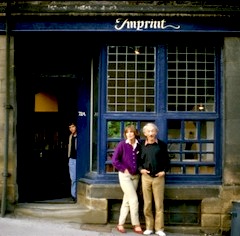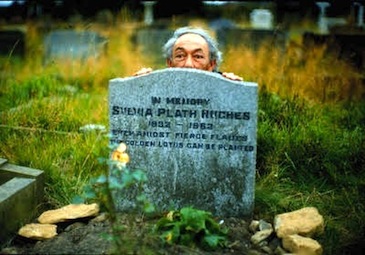By Jay Jeff Jones (with postscript below)
If Sylvia Plath would likely not have chosen to be buried in Heptonstall, Asa Benveniste definitely chose the location of his own grave, having spent the final years of his life in Hebden Bridge, the valley town that adjoins Heptonstall.

It was a place he discovered as a result of leading a course at the Arvon Foundation, a charity that organises writing courses and retreats. Oddly enough the course ran at the same rambling mill owner’s house that Ted Hughes considered as a possible home for Plath and himself. He had bought the place anyway as an alternative to his main residence in Devon, and offered its use to Arvon as a northern residential centre in 1975.
Asa moved north after years of living in London, where he (and wife Pip) had founded the Trigram Press in 1965. This was the same year that the International Poetry Incarnation was held at the Albert Hall, an event that galvanised London’s underground culture and energetically intersected the Beat and post-Beat poets of America and Britain. From this international network came most of the material for Trigram’s publications and two other independent artisan presses launched that same year, Fulcrum and Goliard. Asa also wrote his own poems and ultimately produced seven solo collections. After semi-retiring from publishing, he and Agnetha Falk set up a house/bookshop in Hebden Bridge stocked mostly with the library he had collected over the years. He would look up in alarm as customers arrived through the shop door and watch them leave, carrying purchases, with resignation.
On the day he jokingly enacted Kilroy on Plath’s headstone (photographed by Alistair Johnstone of the Poltroon Press), he had no idea how few years would pass before he became Plath’s permanent neighbour under the soil.
Part 2 of 2: Here is Part 1.
Postscript: Jan 7, 2023 — And here is an essay, “A Poet of the Bop Kabbala,” which Jones has just posted on IT: International Magazine of Resistance, extracted and updated from a new, upcoming printing of his chapbook the wind pours by like destiny. It includes added images and fascinating new info. Jones says, “Hughes buried the ashes of Assia and Shura down in the valley near to Lumb Bank, adding to the sadness of the place.”


This looks to me like the beginnings of a second graveyard chapbook., with the Kilroy Photo on the cover.
maybe there’s a series in the idea? GRAVEYARD CHAPBOOKS.
Stupid stunt.